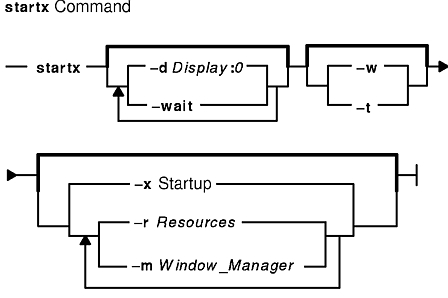

- #MULTISEAT X SESSION STARTX HOW TO#
- #MULTISEAT X SESSION STARTX DRIVER#
- #MULTISEAT X SESSION STARTX WINDOWS#
Even though I found working settings for LightDM, those still seem to be extremely brittle and subject to bugs over bugs in LightDM. To my dismay, I found out that LightDM, while advertised as very small and lean, almost has no useful documentation, and I spent several hours restarting lightdm to find out working settings in trial-and-error. I have looked into LightDM and the Gnome Display Manager gdm3.
#MULTISEAT X SESSION STARTX HOW TO#
Once I knew that X worked with the USB monitor, the next step was to research Display Managers to find out methods how to start this second X instance. In any case, you need to run 2 separate instances of X in parallel. How exactly this is set up, see the instructions below.
#MULTISEAT X SESSION STARTX DRIVER#
In trying various configurations for X, it turned out that it is possible to make X use the framebuffer device node (like /dev/fb1) directly, even without the now obsolete xserver-xorg-video-displaylink package, by using the driver “fbdev” instead of the obsolete driver “displaylink”. This second instance (apart from the first one that is ‘there’ by default) can either be started from a script - or from a Display Manager that supports Multi Seat setups. In researching the alternatives, I found a working solution in running a separate X instance for the USB monitor.

#MULTISEAT X SESSION STARTX WINDOWS#
This sounds very cool, but since all of that is in an extremely early stage, we can assume that a working plug and play for USB monitors will happen only a few years in the future, so going this route is a dead end, at least for now, and when you’re not a hardcore Kernel Module / X Windows developer that has a lot of experience in driving microchips. Apparently it should be possible to have a single X11 server also ‘serve’ USB displays, so that you can share your desktop across several screens in true hotplug fashion. If you research further, you will see that a new service manager called systemd is being developed as better replacement for existing startup/service managers, and that the udl Kernel module is supposted to work with systemd. This DRM kernel module is called udl(announcement here and here), but the version at the point of this writing is 0.0.1 and, for now, it seems to do nothing more than to register and deregister Displaylink chips when plugged in and out. After pulling some threads for an hour or so, it turned out that there is work going on to add displaylink support directly into the Kernel - this new support seems to be different from the already existing capability of the kernel to create a framebuffer device node like /dev/fb1. To my great surprise, it as been removed from Ubuntu in August 2012 because the “displaylink KMS driver in the quantal kernel and x-x-v-modesetting replaces -displaylink”. Almost all documentation in the internet is either outdated or does not work, despite great interest in running many seats with just one computer.Įarlier tutorials in the internet concentrate on the xserver-xorg-video-displaylink package for the X Window System. Introductionįirst, I should mention that there is a lot of movement in working with Displaylink based USB monitors in GNU/Linux. This tutorial shows you a working setup for operating 2 monitors (one conventional one connected to the normal VGA output of your graphics card and one USB monitor with a Displaylink chip), demonstrated on Ubuntu 12.10 and Debian GNU/Linux 7 (Wheezy). I will likely not be able to answer any questions about the subject. Nevertheless I decided to re-publish it in case it is useful for others. It is terribly out of date and meanwhile probably partly or entirely wrong. Some information may no longer be correct or even relevant.


 0 kommentar(er)
0 kommentar(er)
